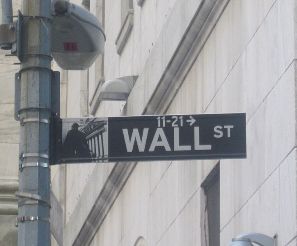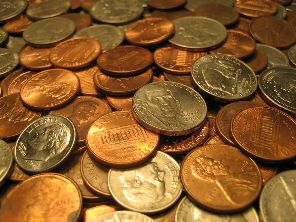Occupy Wall Street Wall Street Fashion Wall Street Financial Industry Fashion Industry
![]()
|
|
The
following Occupy Wall
Street definition is
licensed under the
GNU Free Documentation
License.
The following definition of
Occupy Wall
Street was retrieved from
Wikipedia on October 25,
2011 from the website page
of
http://en.wikipedia.org/wiki/Occupy_Wall_Street
(Occupy
Wall Street). We may update this definition from time to time at our discretion. Possibly, making text updates and possibly updating links, etc. We suggest that you utilize the version at Wikipedia if you wish to view a non altered version. Regarding the references listed (footnotes), they are numbered and are listed at the end of the section (not at the bottom of each page). Please visit the Occupy Wall Street at Wikipedia for the most complete version including more recent updates. Occupy Wall Street Pg. 1, 2, 3, 4, 5, 6, 7, 8, 9, 10, 11, 12 |
Chronology of events
Week 1 (September 1723)
On September 17, 1,000 protesters marched through the streets, with an estimated 100 to 200 staying overnight in cardboard boxes. By September 19, seven people had been arrested. Week 2 (September 2430)
September 24: Street marches, mesh nets, and first pepper-spraying
At least 80 arrests were made on September 24, after protesters started marching uptown and forcing the closure of several streets. Most of the 80 arrests were for blocking traffic, though some were also charged with disorderly conduct and resisting arrest. Police officers have also been using a technique called kettling which involves using orange nets to isolate protesters into smaller groups.
Videos which showed several penned-in female demonstrators being pepper-sprayed by a police official were widely disseminated, sparking controversy. That police official, later identified as Deputy Inspector Anthony Bologna, was shown in other videos hitting a photographer with a burst of spray.
Initially Police Commissioner Raymond W. Kelly and a representative for Bologna defended his actions, while decrying the disclosure of his personal information. After growing public furor, Kelly announced that Internal Affairs and the Civilian Complaint Review Board were opening investigations, again criticizing Anonymous for "[trying] to intimidate, putting the names of children, where children go to school", and adding that this tactic was "totally inappropriate, despicable." Meanwhile, Manhattan District Attorney Cyrus Vance, Jr. started his own inquiry.
Public attention to the pepper-sprayings resulted in a spike of news media coverage, a pattern that was to be repeated in the coming weeks following confrontations with police. Clyde Haberman, writing in The New York Times, said that "If the Occupy Wall Street protesters ever choose to recognize a person who gave their cause its biggest boost, they may want to pay tribute to Anthony Bologna", calling the event "vital" for the still nascent movement.
Week 3 (October 17)
October 1: March on Brooklyn Bridge and mass arrests
On October 1, 2011, protesters set out to march across the Brooklyn Bridge. The New York Times reported that more than 700 arrests were made. The police used ten buses to carry protesters off the bridge. Jesse A. Myerson, a media coordinator for Occupy Wall Street said, The cops watched and did nothing, indeed, seemed to guide us onto the roadway. However, some statements by protesters supported descriptions of the event given by police: for example, one protester tweeted that "The police didn't lead us on to the bridge. They were backing the fuck up." A spokesman for the New York Police Department, Paul Browne, said that protesters were given multiple warnings to stay on the sidewalk and not block the street, and were arrested when they refused. By October 2, all but 20 of the arrestees had been released with citations for disorderly conduct and a criminal court summons. The following day, drivers of the City Bus program sued the New York Police Department for "commandeering their buses" and forcing them to cart detained protesters. On October 4, a group of protesters who were arrested on the bridge filed a lawsuit against the city, alleging that officers had violated their constitutional rights by luring them into a trap and then arresting them; Mayor Bloomberg, commenting previously on the incident, had said that "[t]he police did exactly what they were supposed to do". October 5: Rushing of barricades and second pepper-spraying
On October 5, joined by union members, students, and the unemployed, the demonstration swelled to the largest yet with an estimated 15,000 marchers joining the protest. Smaller protests continue in cities and on college campuses across the country.
Thousands of union workers joined protesters marching through the Financial District. The march was mostly peaceful until after nightfall, when scuffles erupted. About 200 protesters tried to storm barricades blocking them from Wall Street and the Stock Exchange. Police responded with pepper spray and penned the protesters in with orange netting.
Week 4 (October 814)
Inspired by Occupy Wall Street, British protesters organized an occupation of the London Stock Exchange to bring attention to what they saw as unethical behavior on the part of banks. One of the organizers of the protest said the protests are focused against "increasing social and economic injustice in this country". In his opinion, "the Government has made sure to maintain the status quo and let the people who caused this crisis get off scot-free, whilst conversely ensuring that the people of this country pay the price, in particular those most vulnerable."
When we use the term Wall Street on our
website it is not always simply in reference to the street in
New York. It is a more general term to include the entire
financial industry. |
|
Top Wall Street Websites The Wall Street Journal NYSE Euronext Reuters - Finance NY Daily News - Wall Street |
About Us
Contact Us
copyright © 2013 to present day. Wall Street Fashion
